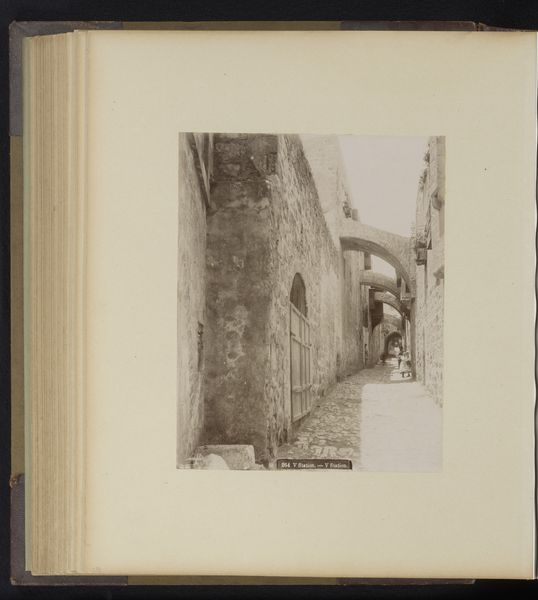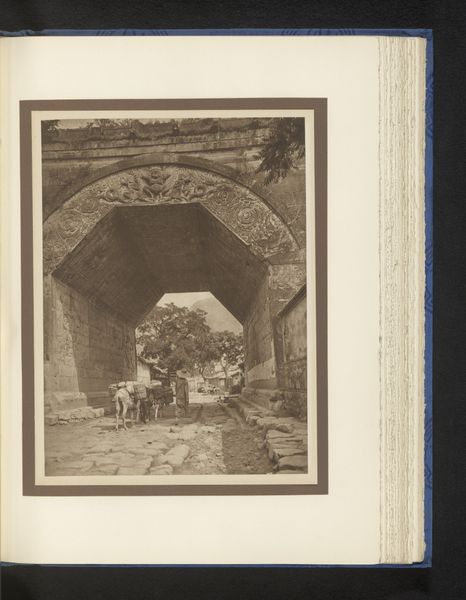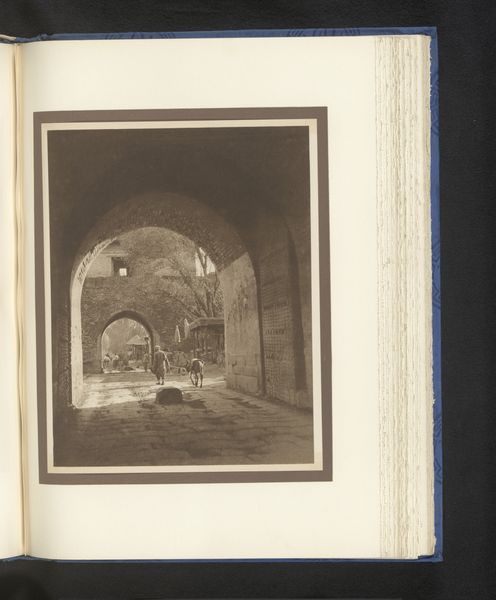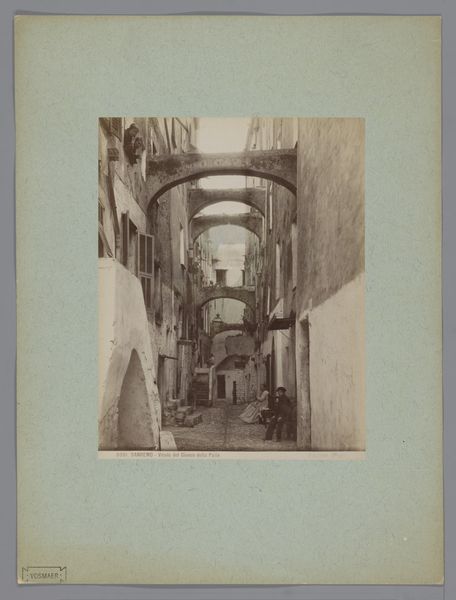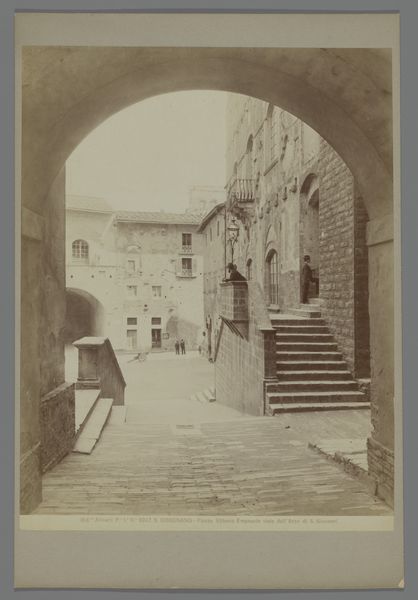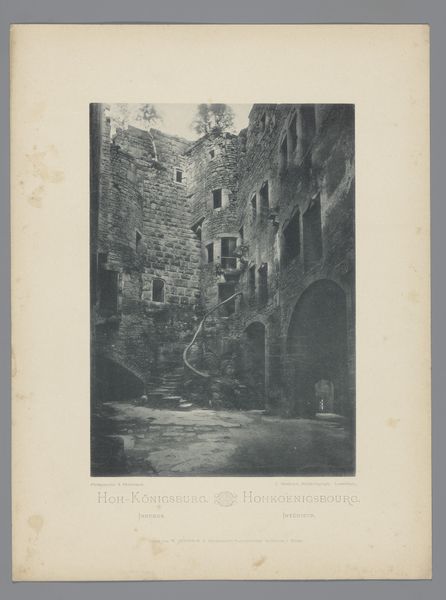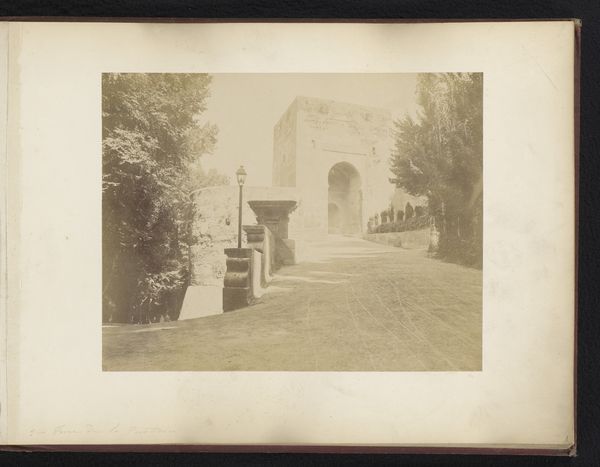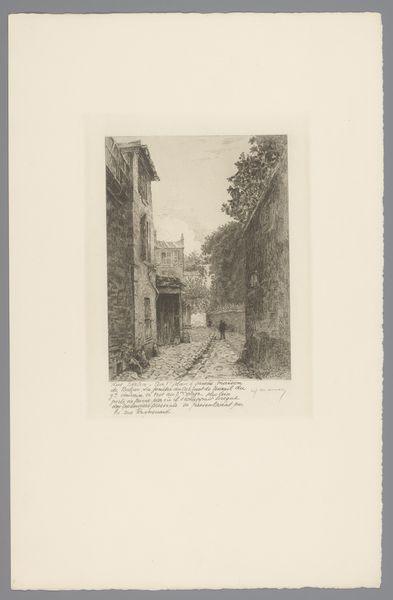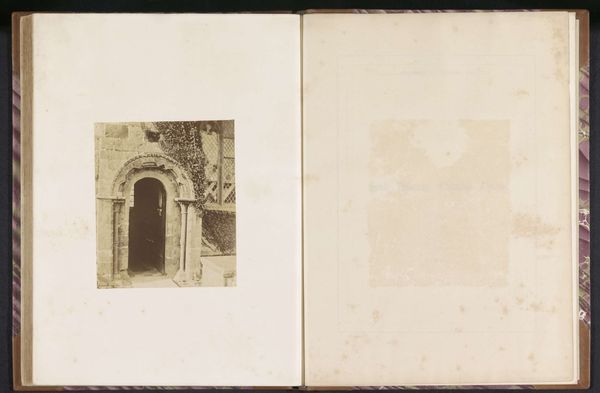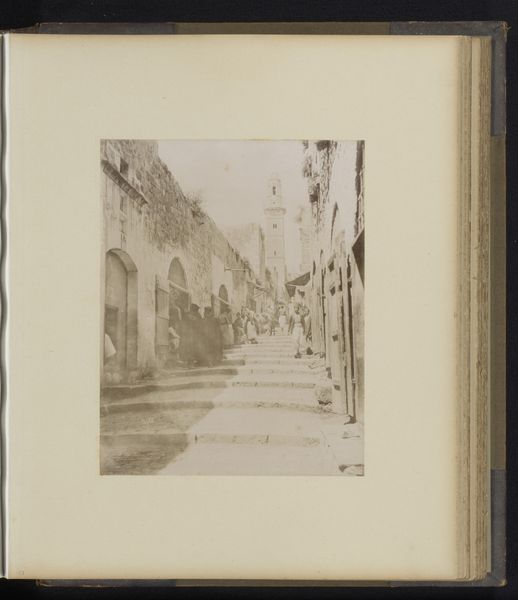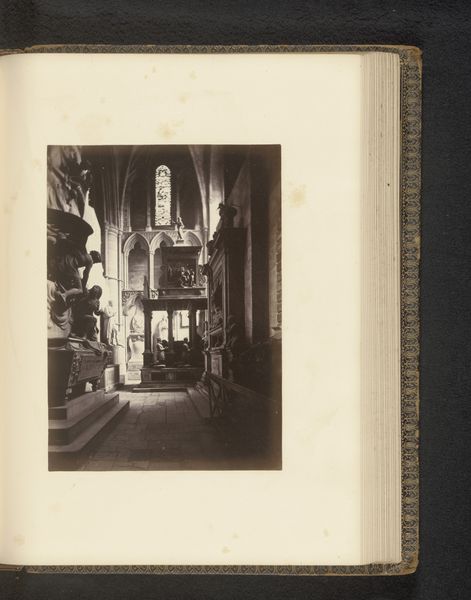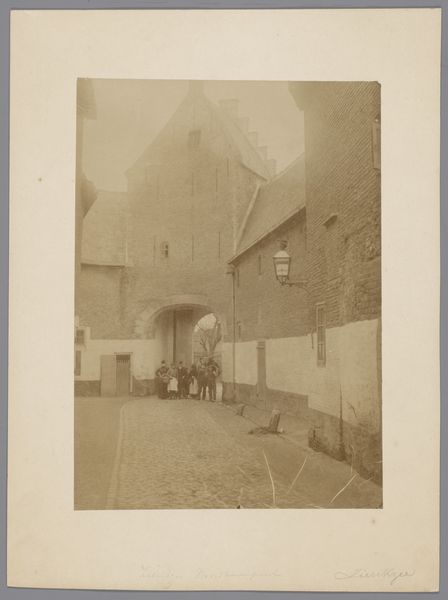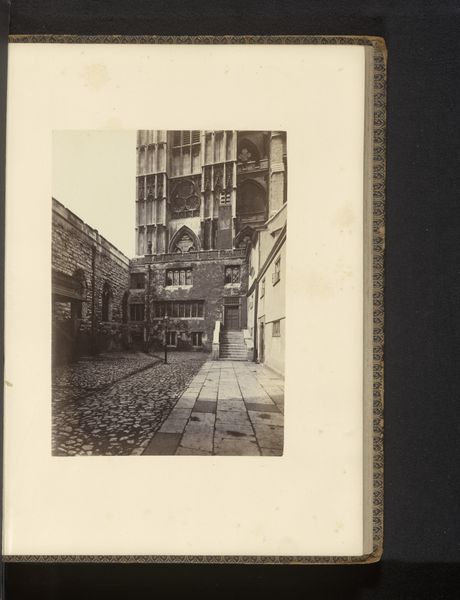
#
aged paper
#
toned paper
#
homemade paper
#
muted colour palette
#
ink paper printed
#
sketch book
#
white palette
#
personal sketchbook
#
street
#
pencil art
#
watercolor
Dimensions: height 277 mm, width 219 mm
Copyright: Rijks Museum: Open Domain
Curator: Here we have Félix Bonfils' "Sixth Station of the Cross on the Via Dolorosa in Jerusalem," dating from 1867 to 1885. Editor: It’s remarkably serene, despite depicting such a loaded site. The subdued, almost monochromatic tones give it a dreamlike quality. The architecture looms, yet the street feels oddly empty. Curator: That serenity, I believe, stems from the very place itself. The Via Dolorosa is heavy with the symbolic weight of Christ’s suffering, an emotional residue etched into its stones. Bonfils captures this somber sense, a historical palimpsest visible in the very structure of the scene. Editor: Palimpsest is apt, given how Bonfils layers textures within the print. The aged paper adds its own layer of meaning; those visible fibers create depth, almost mirroring the rough stonework of the alley. Notice how he plays with light and shadow to emphasize that texture? Curator: Precisely. And consider the historical context: photography itself was evolving, struggling to capture the "truth" of a place. The apparent emptiness of the street, even, tells us much about the time in which it was captured. Editor: Tell me more. Curator: Remember that the Stations of the Cross serve as visual reminders. Pilgrims follow these steps along what is believed to be Christ’s path. To view this scene from that perspective connects us through a lineage of ritual performance of faith through this place and its architectural landscape. Editor: I see the Via Dolorosa has its symbolic value, reinforced through architecture. Bonfils has masterfully used a range of gray tones that lend structure to the old architecture depicted on paper. Even though I am very far removed from the historic events, I cannot escape the feelings embedded in each station of the cross. Curator: Exactly! A single image echoes across centuries, inviting empathy with the suffering it represents. The symbol is never silent; it reverberates through time and cultural experience. Editor: The use of perspective is great; it allows the viewer to understand this work through Bonfil's eye, quite literally. Curator: Indeed. Bonfils offers us not just a picture of a place, but a powerful echo of the historical weight it carries. Editor: I agree. It makes you reflect not only on its immediate aesthetics, but on the layers of history etched into its stones.
Comments
No comments
Be the first to comment and join the conversation on the ultimate creative platform.
